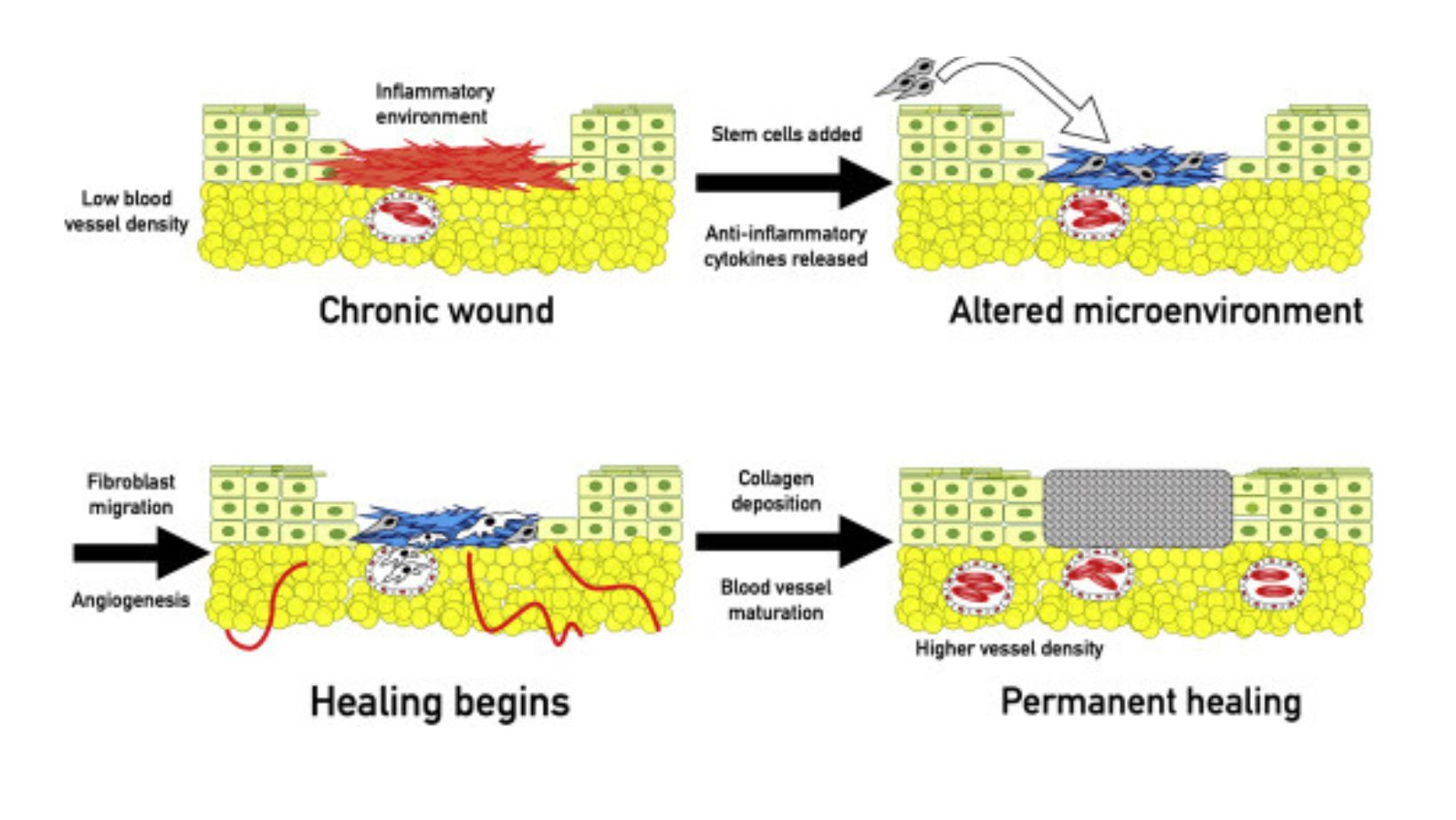Picture a treatment that uses the body’s innate repair mechanisms.
The good news? Stem cell therapy is becoming a reality, particularly when it comes to skin and wound care. Patients with chronic wounds, burns, and persistent skin issues may soon find new hope, all thanks to this pioneering approach.
In a moment, you’ll learn about the potential of stem cell therapy and how it might revolutionize skin and wound care.
Key Takeaways:
- Stem cell therapy uses the body’s natural healing abilities.
- Stem cells can change into other types of cells, speeding up the repair of damaged tissues.
- New skin substitutes made from stem cells can help wounds heal quicker.
- While promising, stem cell therapy must tackle ethical issues, potential body rejection, and high costs to become widely accessible.
Understanding Stem Cell Therapy
Okay, so what is stem cell therapy? It taps into the body’s natural healing powers to repair damaged tissues. Essentially, it uses the patient’s own stem cells and turns them into other types of cells. As a result, it speeds up the recovery process.
Unsurprisingly, stem cell treatment offers new possibilities for conditions that were previously thought of as being close to impossible to treat.
Here’s how it works:
- Stem cells are extracted from the patient.
- They are then cultured to increase their numbers.
- The cultured stem cells are re-injected into the patient, specifically targeting damaged skin or wound areas.
Skin Regeneration and Stem Cells
Stem cells’ capacity to differentiate into different cell types makes them essential to the skin’s self-repair process.
Overview of the Process:
- First, damaged skin signals resident stem cells in the dermis and epidermis.
- Then, the activation of stem cells causes them to proliferate and change into the required cells to replace the injured ones.
Differentiation in Skin Regeneration:
- In the Epidermis: stem cells differentiate into keratinocytes, which are the main cells of the skin’s outer layer. They serve as a defense against environmental damage.
- In the Dermis: they can develop into fibroblasts, which are necessary to make collagen. Both skin strength and flexibility are maintained in large part by collagen.
 By means of effective coordination of various functions, stem cells guarantee that the skin heals itself, therefore regaining its form and function after damage.
By means of effective coordination of various functions, stem cells guarantee that the skin heals itself, therefore regaining its form and function after damage.
Breakthroughs in Wound Healing
Researchers have made great discoveries when it comes to using stem cells to promote skin regeneration and expedite the healing process. As it turns out, stem cells have the ability to transform into different types of cells, which can be helpful in the healing process of injured tissue.
Recent studies have revealed that stem cells possess the ability to secrete growth factors, promoting cell division and regeneration, as well as anti-inflammatory agents that aid in reducing wound inflammation.
Bioengineered skin substitutes derived from stem cells represent another great advancement. Its application in patients results in accelerated healing and lowers the risk of infection.
All of these recent advancements are transforming the field of wound care, providing optimism for improved treatment options. Click here to connect with knowledgeable professionals and gain further insights into stem cell therapies.
Current Applications of Stem Cell Therapy
Stem cells are part of a highly promising field of regenerative medicine that has made remarkable progress in the healing of skin and wounds. They are particularly helpful in dealing with chronic wounds and burns that are difficult to heal using conventional methods.
Stem cell therapy is also key in regenerating skin after severe damage, such as deep wounds and burns.
What’s more, stem cells are being used in cosmetic procedures for skin rejuvenation and anti-aging treatments.
Challenges in Stem Cell Therapy
Even though stem cell therapy has a lot of promise, there are some problems that need to be fixed.
- There are moral worries about where these cells came from. The public’s view on whether or not using embryonic cells is acceptable is often shifting.
- Another problem is making sure that these cells change into the right types of cells.
- There’s a chance of rejection. Because stem cells may be seen as foreign, the body of the receiver might reject them, which would defeat their usefulness.
- Cost is an issue. It’s not cheap to get stem cell treatment, and getting it to more people is still an issue that needs to be fixed.
Implications for Medical Practice
The use of stem cells in medicine could change the way skin diseases are treated. It can change the way standard treatments are done, giving patients better and faster ways to heal.
This progress could also make people less dependent on drug treatments, which could lower the risk of side effects that often come with them.
Stem cell treatment might make it possible to avoid skin grafts, which are invasive and come with their own risks when wounds heal.
In a wider sense, it’s a step toward personalized medicine, which is medicine that is made to fit the needs of each patient. But it’s essential to use it in an ethical way and conduct a lot of study beforehand, so as to make sure it’s safe and effective.

